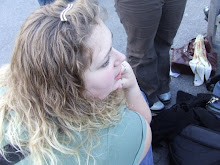"To infinity, and beyond!"
"The Claw, it moves!"
"That's not flying, it's falling with style."
For fans of the franchise, these quotes are easily recognizable — some of the more memorable moments from the one that started it all: Toy Story.
(Proof: I haven't seen the movie in years, and I remembered those easily. Say those lines to anyone in my age bracket, and you'll get an immediate follow-up line.)
I could talk about how ground-breaking it was, how it started one of the most acclaimed and profitable relationships in showbiz (Disney/Pixar), etc.
But I won't.
Instead I'd like to focus on how these films, and the newest one in particular, managed to follow an entire generation through its development.
I remember going to see the original Toy Story as a little girl, not much older than Andy, the boy whose toys get into so much trouble.
The first film worked for me because it brought to life what I (and every other child) was so sure of – toys (and animals, for that matter) are alive. They can talk. They really can, they just won't while humans are around.
The second film, though less memorable, did what every good sequel does by bringing back all the original staple characters and throwing them together with some new fun faces.
Then comes the third film, making Toy Story yet another member of the Trilogy club.
I'm not generally a huge fan of sequels, prequels or tri-quels, especially not when they come 15 years later.
However, that very gap is what made this film's central theme so potent for me and my friends.
It's the same basic concept as before: Toys get separated from Andy, Toys think Andy doesn't love them anymore, Toys encounter danger, destruction and mayhem as they try to get home.
Andy is 18 now, and getting ready to go to college. His mom gives him three choices for the toys: to the attic, to college or in the trash.
The toys Andy intends to send to the attic get mistaken for trash, and sent to a "retirement home" for old, unwanted toys. They realize there's been a mistake, and Woody, ever loyal, leads the way home.
It's probably less original than the first, maybe even the second. And, the villains aren't as creepy (few things can match Sid's House of Horrors from the first film).
But at the center of the film is a chord of a coming-of-age story, of toys who no longer come alive for Andy (though they want to).
Andy has to decide whether or not to hold on to the toys and what they represent, or to let them go.
This film marks the end of a franchise, and in a way, the end of an era.
Whether or not it's a happy ending I guess is up to you.
Subscribe to:
Post Comments (Atom)

No comments:
Post a Comment